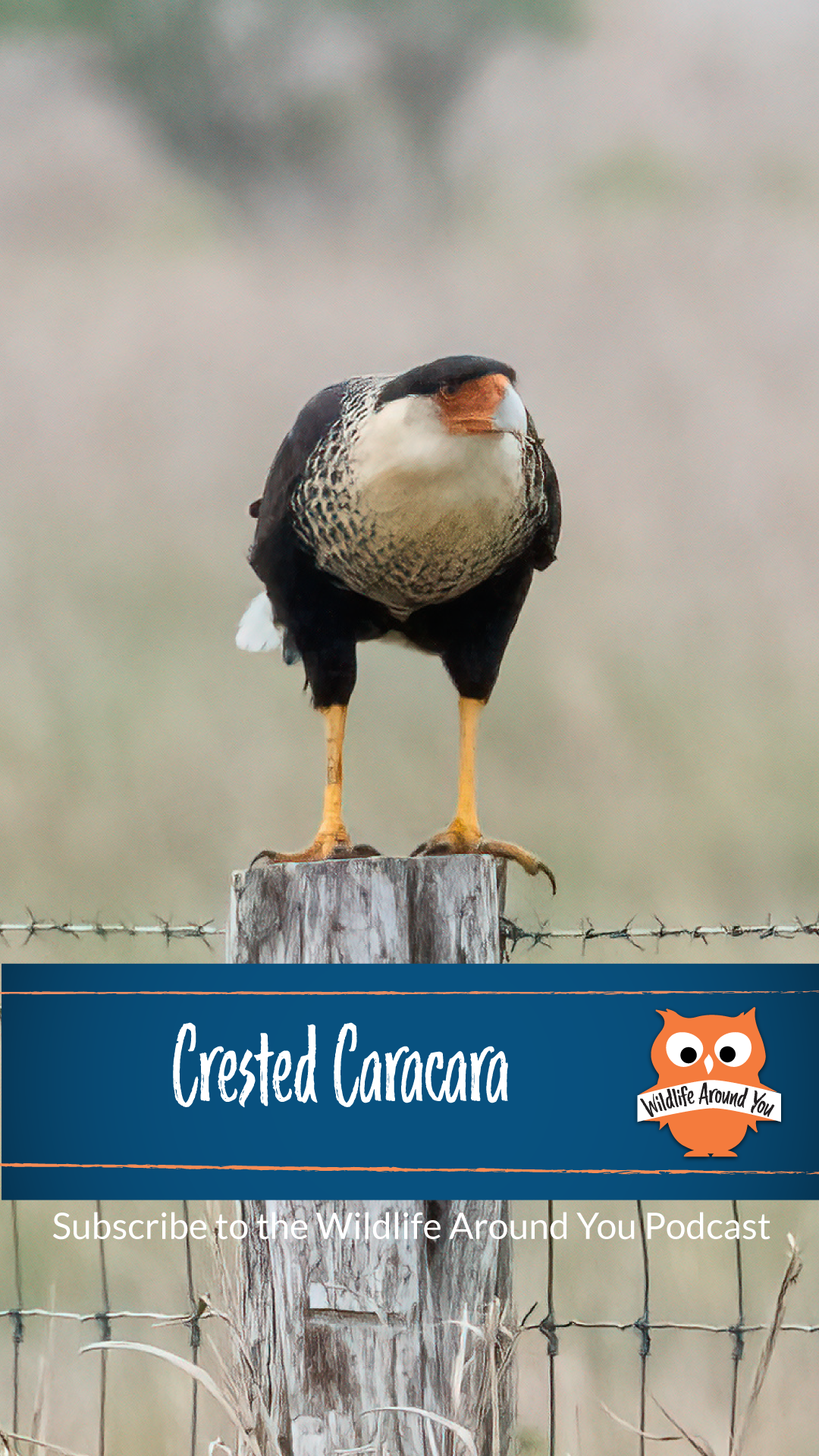Identification
- The Crested Caracara is a falcon that is about 20 inches tall, with long yellow-orange legs and yellow-orange around the beak
- It has a large, broad-winged body and a long tail.
- Adults have a distinct black crest on their head, giving them their name.
- They have a white neck, breast, and belly, while the back, wings, and tail are dark brown to black.
- The bill is strong and hooked.
- The white patches on their wings, head and tail help in identifying them during flight.
Habitat
- Crested Caracaras are found in a range of habitats, including open savannas, grasslands, marshes, and scrublands. They tend to avoid areas that have thick ground cover because it can make it harder for them to get a running start to fly.
- They are native to the Americas and can be found in parts of the Southern United States, Mexico, Central America, and South America.
- In some areas they may congregate around slaughterhouses, henhouses and dumps, because of their opportunistic scavenging tendencies.
Nesting
- The Crested Caracara is the only falcon that collects material to build a nest. Other falcons typically lay their eggs in cavities or on cliffsides.
- The nests can usually be found in the tallest tree, cactus, shrub or whatever other structure is around.
- Nests are about 2 feet across, but if they are using an old next it could be bigger as they keep adding to it.
Behavior
- Crested Caracaras are opportunistic birds and are often seen scavenging for food.
- Unlike most raptors which pounce on prey, caracaras generally fly or run on the ground toward their prey until they overtake it.
- They are known for their bold and inquisitive behavior, often approaching humans or vehicles in search of food.
- These birds are diurnal, meaning they are active during the day.
- Crested Caracaras are excellent fliers and are known for their soaring and gliding abilities. But also regularly walk and run on the ground.
- To get airborne,, they will take a few running steps and then lift into the air.
Offspring
- Crested Caracaras stay together as mates for multiple years and breed once a year.
- The breeding season varies depending on the location but is generally during spring and summer.
- The female typically lays two to three eggs in a nest, and both parents take turns incubating them.
- The incubation period lasts around a month long.
- The chicks are born covered in white down feathers and are cared for by both parents.
- They fledge and leave the nest after about 50 days.
Predators
- As adult birds, Crested Caracaras have few natural predators due to their size and predatory abilities.
- However, their eggs and young chicks may be vulnerable to predation by larger birds, such as owls, eagles, and other raptors.
- They may also face threats from land predators, including snakes, raccoons, and mammals that can climb trees.
Diet
- Crested Caracaras have a varied diet that includes both carrion (dead animals) and live prey.
- They are skilled scavengers and often feed on roadkill, reptiles, small mammals, and insects.
- They are also known to hunt small birds, snakes, frogs, crabs, and even young alligators or turtles.
- They also take advantage of disturbance such as fires or farming operations, grabbing fleeing animals or picking up those that have died.
- They watch for vultures and often join them to feed on carrion. Because Crested Caracaras cannot open large carcasses on their own they must wait for a vulture or larger animal to open it up.
Fun Facts
- The Golden Eagle is the national bird of Mexico, but many think the caracara is the bird in the Aztec pictogram on Mexico’s flag.
- They are often associated with fire because of their behavior of being around wildfires to catch fleeing prey.
- They have a wide range of vocalizations, including high-pitched screams and rattling calls.
- The yellow-orange on their face around the beak changes shades. Scientist believe it might be related to the bird’s mood.
- They live between 18 and 30 years
- It will chase black and turkey vultures off of roadkill to feed.

